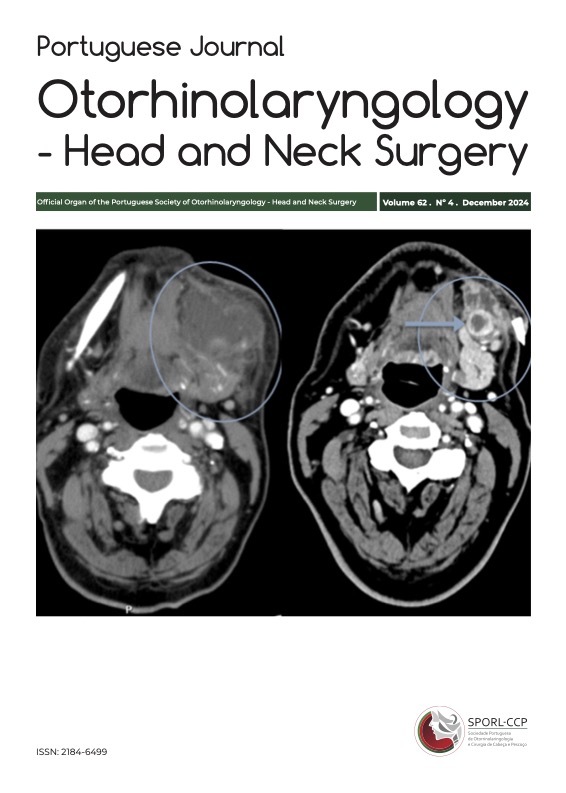The impact of noise exposure in Air Force Military
DOI:
https://doi.org/10.34631/sporl.2044Keywords:
Aviation noise, Sonotraumatic deafness, Aircrew staff, Maintenance staff, Hearing conservation programAbstract
Introduction: Military aviation is characterized by multiple noise sources, which are worrying as they exceed the legal limits required. The objective of this study is to evaluate the need to extend the monitoring program for all military exposed to aviation noise in the Air Force Units, with the specific objectives of evaluating the noise level to which they are exposed during the day and assessing the impact which it has on their quality of life.Material and Methods: In the first phase, a retrospective study was carried out on the noise measurements taken place on Air Force Units, using sound level meters and dosimeters. Next, a cross-sectional observational study was carried out, using a questionnaire survey to the military exposed to noise, about the impact of that exposition on their quality of life. The sample of 112 military was divided in three groups: permanent and temporary aircrew staff and maintenance staff.
Results: The sound pressure levels in most of the aircraft studied proved to be higher than the limits permitted by law. Through the evaluation of the survey, it was found that the three groups had similar results, suggesting that the quality of life of military personnel is affected in the same way by noise, regardless of their functions.
Conclusions: The results justify a reflection on the way in which the assessment of noise is made and support the implementation of an evaluation and follow-up program that includes all military personnel exposed to aeronautical noise
Downloads
References
Carreira SCP. Monitorização do ruído ambiental e laboral na Base Aérea de Monte Real [dissertação na Internet]. Aveiro (Portugal): Universidade de Aveiro, Departamento de Ambiente e Ordenamento; 2010. 200 p. Disponível em: https://core.ac.uk/download/pdf/15564513.pdf
Annual Benefits Report, Fiscal Year 2012. Department of Veteran Affairs. 2012. Disponível em: http://www.va.gov/budget/report
Estragadinho P. Modelo de monitorização e controlo do ruído na linha da frente das Esquadras de Voo da Força Aérea [Internet]. Lisboa: Instituto Universitário Militar; 2017. 59 p. Disponível em: https://comum.rcaap.pt/handle/10400.26/21501?locale=en
Antuñano MJ, Spanyers JP. Hearing and noise in aviation [Internet]. 2006 jan 1. Oklahoma: Federal Aviation Administration. Disponível em: https://rosap.ntl.bts.gov/view/dot/38652
Maresh RW, Woodrow AD, Webb JT. Handbook of Aerospace and Operational Physiology. s.l. : U. S. Air Force, 2016. 842 p. Disponível em: https://apps.dtic.mil/sti/pdfs/AD1020889.pdf
Varandas J. Surdez profissional. Mais Alto, A Revista da Força Aérea Portuguesa [Internet] 1999. Ed. 317 e 317. Disponível em: https://maisalto.emfa.pt/
Portugal. Decreto-Lei nº 182/2006 de 6 de Setembro. Ministério do Trabalho e da Solidariedade Social. Diário da República, nº 172 (Série I), 6584 – 6593
Matos J, Fradique J, Tavares L, Guedes M, Leite MJ. Guia prático para medições de ruído ambiente - no contexto do Regulamento Geral do Ruído tendo em conta a NP ISO 1996. Amadora: Agência Portuguesa do Ambiente, 2020. Disponível em: https://apambiente.pt/sites/default/files/_SNIAMB_Ar_Ruido/Ruido/Notas%20t%C3%A9cnicas%20e%20guias%20de%20Ru%C3%ADdo/GUIApraticoparamedicoesderuidoambiente_2020_2.pdf
Downloads
Published
How to Cite
Issue
Section
License
Copyright (c) 2024 The authors retain copyright of this article.

This work is licensed under a Creative Commons Attribution-ShareAlike 4.0 International License.






